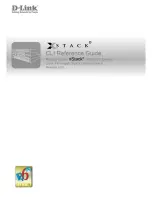
61
When a debug log has been established, tracing may be configured by specifying one or more of the reporting level
options:
Option
Reporting Level
CMDS
Command initiations and completions
CPU
Words received from and sent to the CPU
IOBUS
I/O bus signals and data words received and returned
The
CMDS
option traces the commands executed by the interface. The
CPU
option traces words received from
(control and write data) and sent to (status and read data) the CPU. The
IOBUS
option traces the I/O backplane
signals and data received and returned via the interface.
Examples of the trace formats follow:
>>MUXC cmds: Channel 1 disconnected by DTR drop
>>MUXC cpu: [OTx,C] Parameter = 001200, channel = 1
>>MUXC iobus: Received data 031374 with signals IOO
The Control PCA state contains these registers:
Name
Size
Radix
Description
CTL
1
2
Control flip-flop
FLG
1
2
Flag flip-flop
FBF
1
2
Flag buffer flip-flop
SCAN
1
2
Scan flip-flop
CHAN
4
8
Current channel number
DSO [0:15]
6
2
Control lines C2, C1, ES2, ES1, SS2, and SS1, channels 0-15
DSI [0:15]
2
2
Status lines S2 and S1, channels 0-15
4.11 12966A Buffered Asynchronous Communications Interface
The 12966A Buffered Asynchronous Communications Interface card supplanted the 12531C Teletype and 12880A
CRT interfaces as the primary terminal connection for HP computer systems. The main advantage of this card over
the others was its 128-character FIFO memory. While this allowed more efficient I/O than its interrupt-per-
character predecessors, the most significant improvement was that block input from the 264x-series of CRT
terminals was supported. The 264x were the first HP-supported terminals to provide local editing and character
storage, as well as mass storage via dual DC-100 minicartridge drives. This support meant that input from the
terminal could come in bursts at the full baud rate, which would overrun the older cards that needed a small
intercharacter handling time. The older cards also placed a substantial load on the CPU in high-baud-rate output
applications.
The BACI simulator performs input and output through a Telnet session connected to a user-specified port or
through a specified host serial port. The
ATTACH
command specifies the local port to be used for Telnet
connections:
ATTACH BACI <port>
...where
port
is a decimal number between 1 and 65535 that is not being used for other TCP/IP activities. When
the BACI is attached and the simulator is running, the BACI listens for connections on the specified port. Only one
connection at a time is permitted.
















































